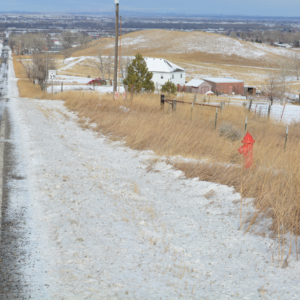Commercial and New Residential
Commercial
Roman Catholic Bishop Of Great Falls/ Langlas & Assoc., Inc., 3 Broadwater Ave, Com Addition, $400,000
DLB/ JMS LLC, 1414 4th Ave N, Com Addition, $10,000
Alliance Management/ Great States Construction, 4427 Altay Dr, Com Footing/Foundation, $501,570
Americo Real Estate Company/ Americo Real Estate Construction, 1515 Grand Ave, Com Remodel, $1,420,000
Melissa Fuller/ Beartooth Holding & Construction, 1686 Shiloh Rd, Com Remodel, $75,000
SCL Health/ Hardy Construction Co., 1106 N 30th St, Com Remodel, $50,000
Joey Pickett/ Air Controls Billings Inc., 2205 Grand Ave, Com Remodel, $8,000
Kendall, Larry G/ Bradford Roof Management Inc, 1091 S 25th St W, Com Fence/Roof/Siding, $67,633
Alliance Management/ Great States Construction, 4430 Altay Dr, Com New Other, $15,113,587
City Roasting Company, LLC/ Jones Construction, Inc, 3138 Gabel Rd, Com Remodel, $350,000
Grabos LLC/ Jones Construction, Inc, 1500 Poly Dr, Com Remodel, $500
Montana Prime Meats, 524 Liberty St, Com Remodel, $500
LKF Investments LLC/ LC Custom Homes, 2044 Broadwater Ave, Com Remodel, $60,000
BCJM Properties LLC/ Studer Construction Company, 101 N 24th St, Demolition Permit Commercial, $154,000
Billings Food Bank Inc/ Centimark Corp Tpo, 2112 4th Ave N, Com Fence/Roof/Siding $216,358
Jackson Court, LLLP/ Golden Eagle Construction, 3602 Jackson Ct,
NA/ 3606 Jackson Ct, Com New 3+ (Multi Family, $782,925
NA/ 3610 Jackson Ct, Com New 3+ (Multi Family), $782,925
NA/ 3614 Jackson Ct, Com New 3+ (Multi Family), $782,925
NA/ 3607 Jackson Ct, Com New 3+ (Multi Family), $782,925
NA/ 3603 Jackson Ct, Com New 3+ (Multi Family), $782,925
Billings 13 Re Llc/ Sletten Construction Companies,
3975 King Ave W, Com New Restaurant/Casino/Bar, $3,300,000
Yellowstone County / Safetech, Inc, 2825 3rd Ave N, Com Remodel $41,326
Nathan Matelitch/ Neumann Construction, Building Misc, Com Remodel – Change In Use, $69,000
Residential
Buscher Construction/ Buscher Construction Ltd, 4936 Whisper Way, Res New Single Family, $300,000
Buscher Development Inc/ Buscher Construction Ltd, 4960 Whisper Way, Res New Single Family, $300,000
Infinity Home/ Infinity Home LLC, 912 Ortega St, Res New Single Family, $219,719
Infinity Homes / Infinity Home LLC, 2463 Bonito Loop, Res New Single Family, $321,368
Scott Fradenburgh, 1035 Beringer Way, Res New Single Family, $491,253
Infinity Home/ Infinity Home LLC, 2213 Entrada Rd, Res New Single Family, $241,855
Infinity Home/ Infinity Home LLC, 2217 Entrada Rd, Res New Single Family, $195,796
Magnus Land Development LLC, 6409 Signal Peak Ave, Res New Single Family, $0.00
Magnus Land Development LLC , 6409 Signal Peak Ave, Res New Single Family, $0.00
McCall Homes/ McCall Development, 1807 St George Blvd, Res New Single Family, $249,531
Magnus Land Development LLC, 6330 Beckville Ln, Res New Townhome, $0.00
Magnus Land Development LLC, 6330 Beckville Ln, Res New Townhome, $0.00
Magnus Land Development LLC, 6313 Beckville Ln, Res New Townhome, $0.00
Magnus Land Development LLC, 6313 Beckville Ln, Res New Townhome, $0.00
Magnus Land Development LLC/ Brown Builders Inc., 6409 Signal Peak Ave,
Res New Two Family, $326,204
WH High Sierra 50 LLC/ WH High Sierra 50 LLC (Williams Homes), 1002 Matador Ave, Res New Single, $190,062
WH High Sierra 50 LLC/ WH High Sierra 50 LLC (Williams Homes), 1006 Matador Ave, Res New Single Family, $197,200
WH High Sierra 50 LLC/ WH High Sierra 50 LLC (Williams Homes), 927 Presidio Ln, Res New Single Family, $197,200
WH High Sierra 50 LLC/ WH High Sierra 50 LLC (Williams Homes), 1018 Matador Ave, Res New Single Family, $288,788
WH High Sierra 50 LLC/ WH High Sierra 50 LLC (Williams Homes), 1022 Matador Ave, Res New Single Family, $193,062
WH High Sierra 50 LLC/ WH High Sierra 50 LLC (Williams Homes), 929 Mission Oaks Dr, Res New Single Family, $197,200
Jeffrey C Leischner Trust, 2812 Orchard Dr, Res New Single Family, $350,000
WH Copper Ridge 54, LLC/ WH Copper Ridge 54, LLC, 7008 Copper Sunset Dr, Res New Single Family, $362,036
WH Copper Ridge 54, LLC/ WH Copper Ridge 54, LLC, 7019 Copper Sunset Dr, Res New Single Family, $305,034
WH Copper Ridge 54, LLC/ WH Copper Ridge 54, LLC, 7007 Copper Sunset Dr, Res New Single, Family, $264,526
WH Copper Ridge 54, LLC, 7013 Copper Sunset Dr, WH Copper Ridge 54 LLC, $331,810
WH Copper Ridge 54 LLC/ WH Copper Ridge 54, LLC, 7014 Copper Sunset Dr, Res New Single Family, $362,798
Calvin Fry/ Square Butte Builders LLC, 865 El Rancho Dr, Res New Single Family, $266,685
Calvin Fry/ Square Butte Builders LLC, 871 El Rancho Dr, Res New Single Family, $296,076
Magnus Land Development LLC, 6413 Signal Peak Ave, Res New Single Family, $0.00
Magnus Land Development LLC, 6413 Signal Peak Ave, Res New Single Family, $0.00
Magnus Land Development LLC, 6305 Beckville Ln, Res New Single Family, $0.00
Magnus Land Development LLC, 6305 Beckville Ln, Res New Single Family, $0.00
Magnus Land Development LLC/ Brown Builders Inc., 6413 Signal Peak Ave, Res New Two Family, $0.00
Magnus Land Development LLC/ Brown Builders Inc., 6305 Beckville Ln, Res New Two Family, $327,260
Mike Christensen, 4819 Gold Creek Trl, Res New Single Family, $372,140
CDH, LLC/ CDH, LLC, 5225 Dovetail Ave, Res New Single Family, $333,126
CDH, LLC/ CDH, LLC, 5346 Dovetail Ave, Res New Single Family, $277,221
CDH, LLC/ CDH, LLC, 5402 Dovetail Ave, Res New Single Family, $314,927
CDH, LLC/ CDH, LLC, 5318 Dovetail Ave, Res New Single Family, 315,370
McCall Homes/ McCall Development, 1872 St George Blvd, Res New Single Family, $295,774





